Stonehaven train crash: Train was travelling at 73mph
The speed is just 2mph below the limit for the type of train involved on that section of the line.
The investigators also reported that gravel and rock from a field drain trench had been washed onto the railway at the landslip site.
Advertisement
Hide AdAdvertisement
Hide AdThe incident happened on Wednesday 12 August as the Glasgow-bound train was travelling back towards Stonehaven after being stopped following reports of another landslip nearby.
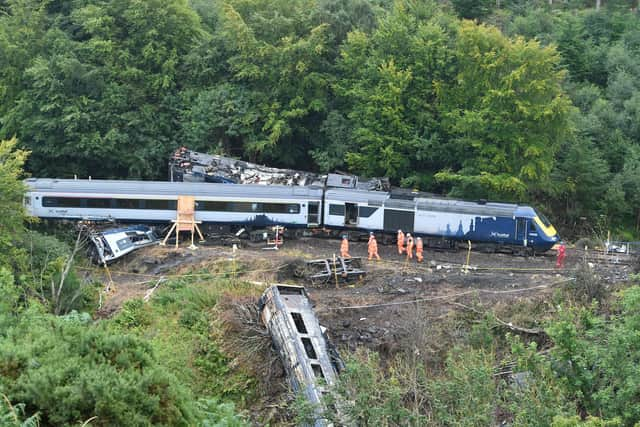

The driver, conductor and a passenger were killed in the incident which followed torrential rain.
An update from the UK Department for Transport’s rail accidents investigation branch (RAIB) said the train was at a standstill at Carmont, four miles south of Stonehaven, for more than two hours after being halted by a signaller at 6:59am.
The report said the train was given permission to start moving north at 9:25am, when it was routed over a crossover to the northbound or “down” line.
It said the train passed over the crossover at 5mph (8 km/h) a minute later.
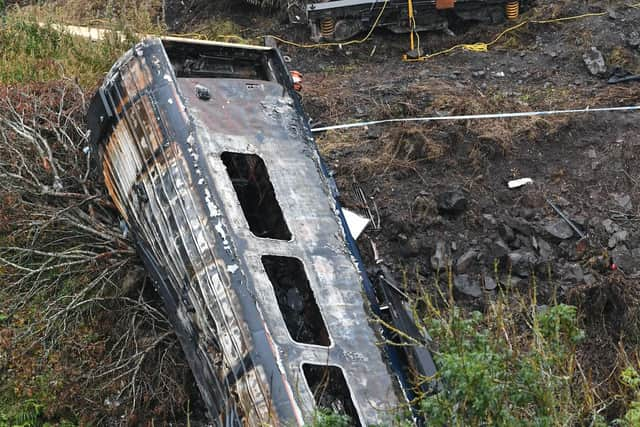

The report said: “Its speed increased, reaching 72.8mph after it had travelled for approximately 1.4 miles, which is within the maximum permitted speed for HSTs [High Speed Trains – the type involved] of 75mph on this stretch of line.
“At around 09:38, the train struck a landslip covering the down line and derailed.
"As the track curved to the right, the train continued in a roughly straight line for around 77 yards until it struck a section of bridge parapet, which was destroyed."
Advertisement
Hide AdAdvertisement
Hide Ad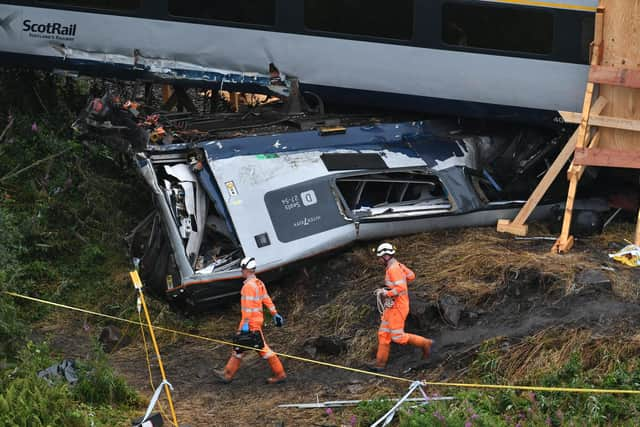

The report said the train derailed after hitting a landslip.
It said: “As the track curved to the right, the train continued in a roughly straight line for around 77 yards until it struck a section of bridge parapet, which was destroyed.
"The leading power car continued most of the way over the bridge and fell from the railway down a wooded embankment, as did the third passenger carriage.
"The first passenger carriage came to rest on its roof, having rotated to be almost at right angles to the track.
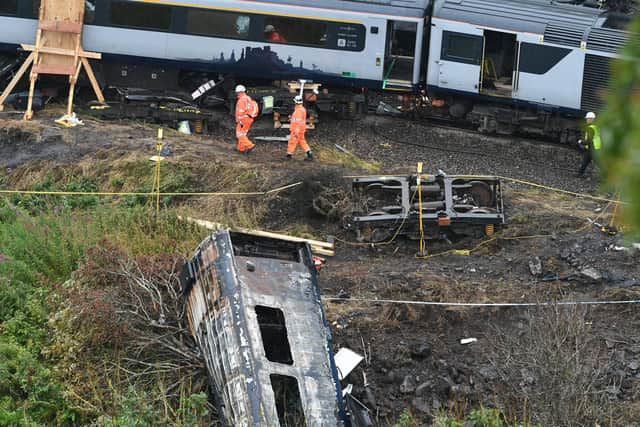

"The second passenger carriage also overturned onto its roof and came to rest on the first carriage.
"The fourth passenger carriage remained upright and attached to the rear power car.
"It also came to rest on the first carriage.
"All wheelsets of the rear power car derailed, but it remained upright.”
Advertisement
Hide AdAdvertisement
Hide AdInvestigators also highlighted the possible part played by a drain.
They said from 5-9am, around 52mm of rain fell in the area - almost 75 per cent of the total average August rainfall in Aberdeenshire.
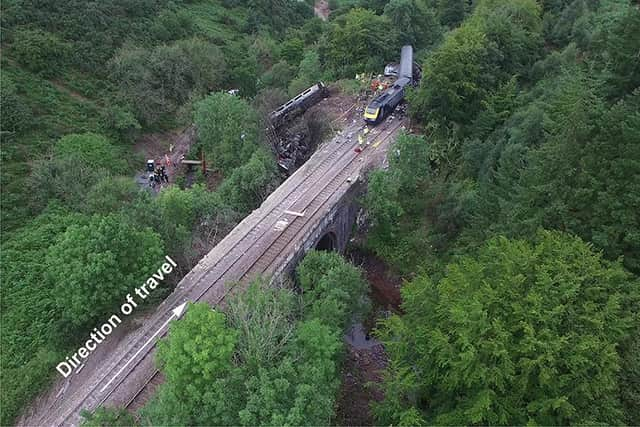

The report said: "In the area where the derailment occurred, on the left-hand side of the railway (in the direction of travel of the train) a slope rises steeply to a field which then slopes gently upwards away from the railway.
"A drain runs northwards along the lower edge of the field until it reaches an access chamber about 50m south of the landslip area, from where it runs diagonally down the steep slope, passing through two more access chambers, until it reaches an outfall structure at a track level ditch which takes water northwards towards Carron Water.
"The drain running diagonally consists of a 450mm (18in) diameter plastic pipe laid at the bottom of a trench.
"After the drain was installed, the trench was filled with gravel.
"Water flowing from land above the railway washed some of this gravel onto the railway, together with some larger pieces of rock which had formed part of soil eroded from the sides of the trench.”
The RAIB said its investigations were likely to include “operating procedures applied”, management of earthworks and drainage in this area, including recent inspections and risk assessments, and actions taken in response to previous safety recommendations.
A message from the Editor:
Advertisement
Hide AdAdvertisement
Hide AdThank you for reading this story on our website. While I have your attention, I also have an important request to make of you.
With the coronavirus lockdown having a major impact on many of our advertisers - and consequently the revenue we receive - we are more reliant than ever on you taking out a digital subscription.
Subscribe to scotsman.com and enjoy unlimited access to Scottish news and information online and on our app.
With a digital subscription, you can read more than 5 articles, see fewer ads, enjoy faster load times, and get access to exclusive newsletters and content.
Visit https://www.scotsman.com/subscriptions now to sign up.
Our journalism costs money and we rely on advertising, print and digital revenues to help to support them.
By supporting us, we are able to support you in providing trusted, fact-checked content for this website.
Joy Yates
Editorial Director
Comments
Want to join the conversation? Please or to comment on this article.